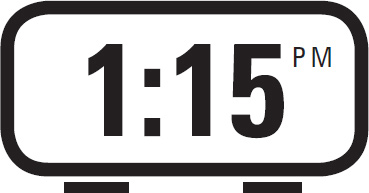

If you have ever packed a backpack for an overnight hiking trip, you know that everything has its place: your sleeping bag sits inside the zippered flap at the pack’s base; the heavy food bag sits low and tight against your back; your foam sleeping pad is strapped to the outside, and the inflatable pad that sits on top of it is shoved inside; little stuff sacks hold your cooking gear, extra clothes, and toiletries. All that stuff is packed away for when you need it later in the trip. But your backpack’s top flap, ah, that’s where the important stuff goes, everything that you need during the day—your snacks, sunscreen, map and compass, roll of duct tape for blister care, and UV water purification pen. Tomorrow you may move new food from the packed-away bag into your top flap, but for now you have everything you’re likely to need accessible right there on top.
Your brain is the same way. You have many kinds of memory, each with its place. Kinesthetic memory is different from emotional memory, which is different from your memory of faces, which is different from the storage of facts. The vast majority of these things we leave packed away deep in our brains. The stuff we really need right now is what we move to our brain’s top flap: working memory. If you want to be able to work with more information, you’ll have to expand the capacity of this top flap that is your working memory.
Because working memory is where we manipulate information for any purpose you can imagine, the power of your working memory is absolutely central to almost everything you do with your brain. We’ve seen that if working memory is plugged with stereotype threat, you may crash and burn when parallel parking or taking a math test. And the limit of your working memory is part of why you can’t multitask—you just can’t hold that much stuff in the front of your mind.
That’s because it really doesn’t hold much. The mistaken opinion is that your working memory can hold seven “chunks” of information, and you may have heard the mistaken extension of this opinion that your seven-digit working memory is why we have seven-digit phone numbers. We know now that very few of us have a full seven chunks but we also know that with practice, knowledge, and expertise, we can come to hold a vast amount of information inside a single chunk. Here’s an easy example: if you are trying to remember the phone number of someone who lives in southern Ontario, holding on to the area code 519 may claim three full chunks of your working memory; but if you’re trying to call a friend in the town of Reeves, Louisiana, it would certainly only take one chunk to remember 666. (Or it used to: the residents of this small, religious town successfully petitioned the federal government to decouple their town from the number of the devil, but that’s beside the point.) Likewise, you would have a hard time remembering the letters m-a-s-c-a-r-p-o-n-e, but putting them together into the word mascarpone (especially if you have expertise in Italian spelling) would claim only one chunk or less of your working memory.
Chances are you’re already an expert at remembering a number with repeating digits or letters that form words. If you were a chess expert, a pyramid of pawns might be kind of the same: you would look at it, immediately recognize and categorize it, and assign the entire pattern to one chunk in your working memory. If you think that chess is played by taking your opponent’s pieces, you might have to remember each of these pawn positions individually, using much more working memory. Something similar is true of any kind of expertise—the more expert you are, the more you are able to “big-chunk” an assortment of bits of information that you know are related.
Think about it. What do you know? That is, in what areas of your work, hobbies, family, or arcane knowledge are you an expert? If you know baseball, you’ll be able to “big-chunk” the entire sequence of an inning; if you know how to bake a soufflé, the list of ingredients may not even claim a full space; if you know how to build trestles, you might not need to painstakingly write down every measurement. But beware your expert attempts to categorize and chunk. Another feature of expert working memory is the tendency to assume that every new case is the same as the things you already know, which means that experts are prone to overlooking things. You can see this in chess. There’s a ranking at which chess players are very good at mining their expert working memories for moves to match most board positions … and then there’s an even higher ranking in which masters know the “right” moves but aren’t bound by them. That higher ranking is the pinnacle of working memory.
Biggering Your Brain
Researchers have shown that repeated practice with brutally difficult brain games can grow your working memory, and one side of a raging debate in the field of intelligence research even believes that training working memory can boost your IQ. One promising brain-training game, called the “dual n-back” asks you to remember strings of information—not just a string of numbers written on a sheet of paper or a string of letters read through headphones, but both at the same time. You monitor these strings, and then you report the letter, number, or symbol that you heard two-ago or three-ago or four-ago (thus the n in “n-back”). For you, the n-back is only a quick Google search away. If you really want to do something powerful to bigger your brain and you aren’t afraid of hard work, this training can expand the area of your brain where you get things done.